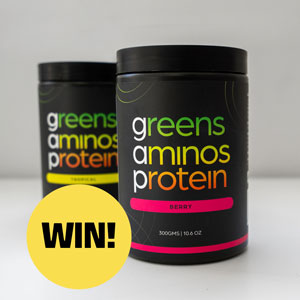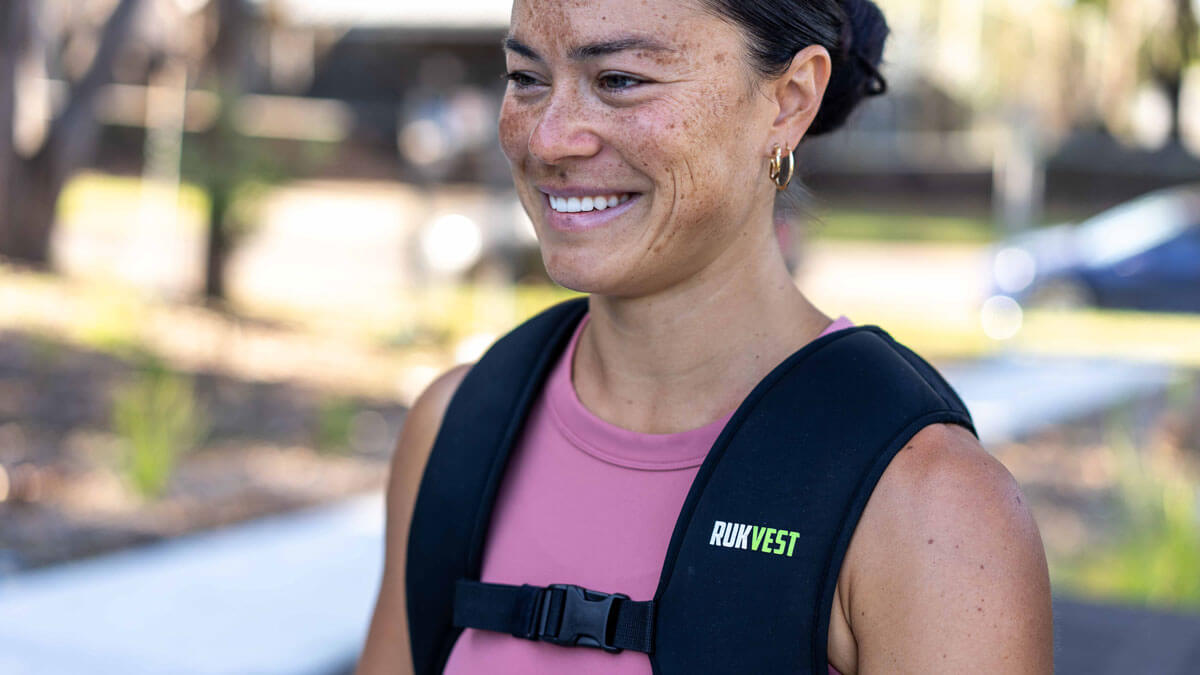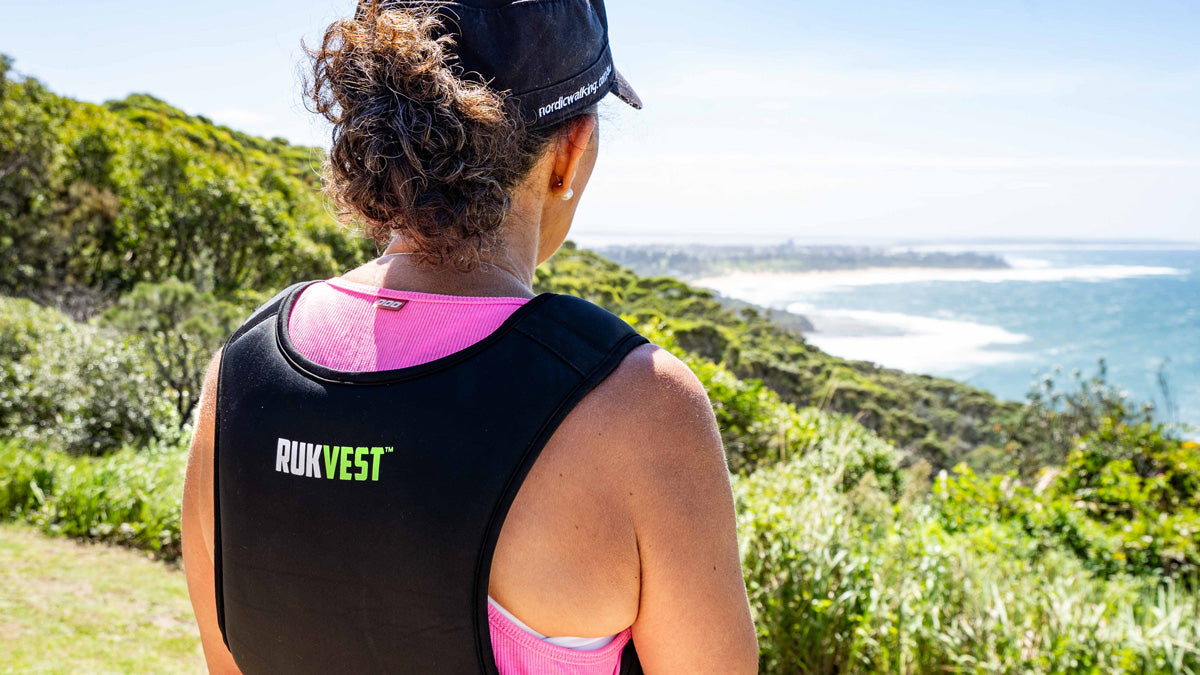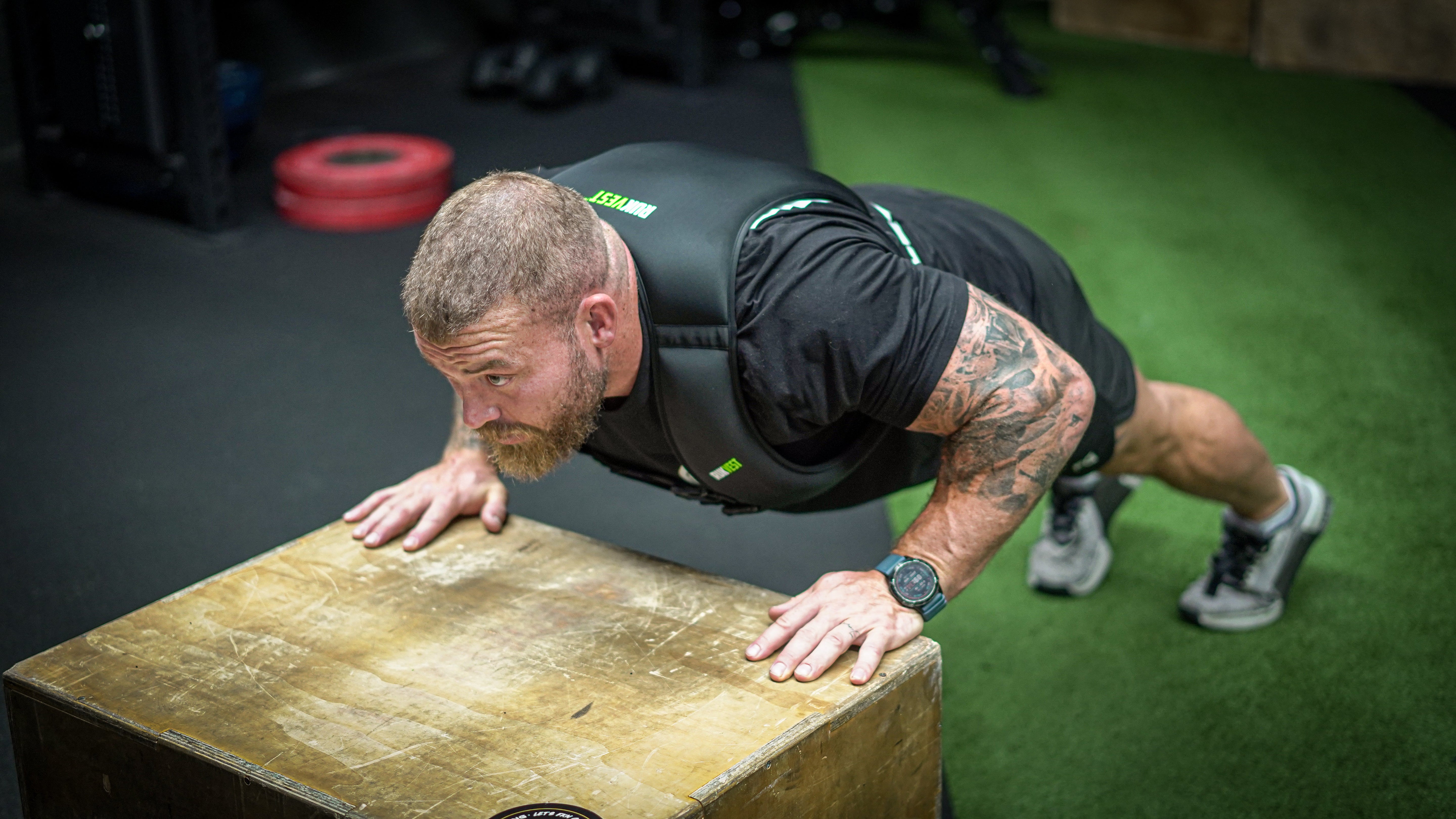Weighted vests are a simple way to make everyday movement harder in a good way. Add some load to walking, rucking, stairs or strength work and you’ll build strength, bone density and fitness without needing complicated gear.
A good starting point for most people is 5–10% of your body weight. That’s usually enough to feel the difference without trashing your joints or changing your walking pattern.
The key is choosing a vest that fits well, feels stable and suits what you actually want to do with it. If you’re looking for the best weighted vest in Australia, comfort and stability matter more than chasing the heaviest possible weight.
Key Summary
- Start with a vest that’s around 5–10% of your body weight so you feel the benefit without smashing your joints or changing your walk.
- Fixed-weight vests are usually more comfortable and stable than adjustable ones, which can rattle, shift and dig in as you move.
- Prioritise fit and comfort: a snug, close-to-body vest with secure straps, even weight distribution and no bounce is what you want.
- Choose breathable, durable materials and a design that feels OK for 30–60 minutes, not just for a quick try-on.
- Progress your training with hills, stairs, pace and distance before chasing heavier loads.
- RUKVEST uses weighted gel (iron sand in gel, not loose granular sand) to sit flat against the body, reduce bounce and stay comfortable for real-world rucking and walking.
How Heavy Should Your Weighted Vest Be?
As a general guide:
-
Beginners: Start with around 5% of body weight
(e.g. 70 kg person → about 3–4 kg vest) - Comfortable with regular walking/rucking: Move towards 7–10% of body weight
- More experienced / stronger base: You might eventually go beyond this, but only if your form and joints feel good.
You don’t need to jump straight to a very heavy vest. You can increase the challenge by:
- Adding hills or stairs
- Extending your distance or time
- Adding short intervals of faster pace
Progress the terrain and volume first. The vest weight can stay the same for a while.
Key Features to Compare When Buying a Weighted Vest
Fixed-Weight vs Adjustable Vests
This is one of the biggest decision points when buying a weighted vest.
Adjustable weighted vests sound great in theory because you can add or remove blocks. In reality, those weight blocks often:
- Shift, rattle or bounce as you move
- Dig into your ribs or shoulders
- Distract you and throw off your rhythm
That movement also adds extra impact your body wasn’t really designed for, which can show up as shoulder, neck or lower-back niggles over time.
Fixed-weight vests are locked in and usually built to sit closer to the body. When the weight is:
- Evenly distributed
- Held firmly against your torso
- Not sliding around
your walk or ruck feels more natural and you can just get on with it.
If you want to increase intensity, you don’t actually need adjustable plates. You can:
- Pick steeper hills
- Take the stairs instead of the lift
- Shorten rest, increase distance or pace
A well-designed fixed-weight vest lets you progress your training without dealing with loose blocks or pockets.
Fit and Comfort
If a vest doesn’t fit well, you won’t wear it. Key things to look for:
- Snug but not restrictive: It should hug your torso so it doesn’t bounce, but still let you breathe deeply and move your arms freely.
- Secure shoulder and torso fit: No big gaps at the shoulders or chest. The vest should sit flat, not flap.
- Adjustable straps: Helpful to fine-tune the fit so it stays put on different body shapes.
Your test: if you can walk, use stairs and do a few squats without the vest shifting or digging in, you’re in the right zone.
Materials, Breathability and Durability
You’ll likely be sweating in this thing, so fabric matters.
Cheaper vests often use stiff nylon or cotton that:
- Traps heat
- Rubs or chafes
- Can feel bulky or “boxy”
Look for:
- Breathable outer fabrics like performance lycra or similar
- Soft inner finishes against the skin
- Sturdy stitching and hardware that can handle regular training
Inside the vest, how the weight is held is just as important as what it’s made from.
At RUKVEST, we use weighted gel: iron sand suspended inside a silicone gel, rather than loose granular sand. This helps the weight sit flat, mould to your body and reduces that “bag of sand” feeling you get with cheaper vests.
The result is more even weight distribution and less bounce, which is what you want for longer walks or rucks.

Choosing a Weighted Vest for Your Activity
Rucking and Walking
For rucking and walking, your priorities are:
- Comfort over long distances
- Even weight distribution
- Minimal bounce
Look for a vest that:
- Sits close to the body
- Has wide, comfortable shoulder coverage
- Uses materials that don’t feel like a sauna after 20–30 minutes
This is exactly the use case we design RUKVEST for: steady, repeatable, real-world movement where comfort and stability matter more than showing off with maximum weight.
Strength Training and HIIT
For strength work and higher-intensity sessions (squats, lunges, step-ups, push-ups, even some plyometrics), you want:
- A vest that doesn’t ride up when you bend or jump
- No hard blocks hitting your ribs
- Secure straps that don’t loosen mid-session
You often don’t need huge loads here. A moderate, fixed weight is usually plenty, because your heart rate and muscles are already working hard.

Price, Quality and Long-Term Value
You’ll see vests at every price point, from cheap online deals to higher-end options.
Cheaper vests often come with trade-offs:
- Loose granular sand that shifts, clumps or leaks
- Strong chemical smells that don’t wash out easily
- Basic fabrics that trap heat or feel rough
- Poor stitching that can fail under repeated use
A premium vest costs more up front but should give you:
- Better materials against your skin
- Stable, predictable weight
- A fit you can tolerate for 30–60 minutes at a time
- Years of use instead of months
RUKVEST weighted vests are built with:
- Weighted gel rather than loose granular sand
- Breathable lycra
- A close, non-bulky fit for everyday movement and rucking
The aim is that you actually want to wear the vest regularly, not leave it in the cupboard after two painful sessions.
Matching Your Vest to Your Experience Level
If You’re New to Weighted Vests
- Start light (around 5% of body weight).
- Stick to flat or slightly hilly walks at first.
- Focus on how your joints feel the next day.
Once that feels normal, you can add:
- Slightly more distance
- A bit more elevation
- Short intervals at a faster pace
You don’t need to change the vest weight straight away.
If You’re More Experienced
If you already walk, ruck or train regularly without issues:
- A heavier fixed-weight vest can be a good option.
- Increase one variable at a time (distance, hills, speed or load, not all at once).
The priority is always good form and how your body feels, not chasing the heaviest possible vest.

Conclusion: Making Your Weighted Vest Decision
Choosing a weighted vest doesn’t need to be complicated. Focus on:
- A sensible starting weight (5–10% of body weight)
- A fixed, stable load that doesn’t move around
- A fit that feels snug and natural when you walk, climb stairs and squat
- Materials that are comfortable and built to last
From there, you can use hills, stairs, pace and distance to progress your training.
RUKVEST weighted vests are designed with this in mind: no loose granular sand, a close fit, breathable materials and weighted gel that sits comfortably against the body. With an average rating of 4.95 stars from verified users, they’re built for people who actually want to use their vest regularly, not just unbox it and regret the purchase.
Ready to Try a RUKVEST Weighted Vest?
If you’re ready to start rucking or level up your walks and strength training, explore our range of RUKVEST weighted vests designed here in Australia.







What weight should I start with in a weighted vest?
Most people do well starting with 5–10% of their body weight. It should feel noticeably harder, but not change your walking pattern or feel like your joints are being hammered.
Are there specific features to look for in a weighted vest?
Yes. Look for a snug fit, secure straps, even weight distribution, breathable fabric and a design that doesn’t bounce or dig in. If the weight moves around a lot, it’s going to be annoying fast.
Can I use a weighted vest for cardio?
Absolutely. Walking, rucking, stairs and gentle jogs can all be progressed with a vest. Start with walking and hills before you add running.
Are weighted vests safe for all fitness levels?
They can be, if used sensibly. Beginners should start light, build gradually and ideally speak with a health or fitness professional if they have existing joint or back issues. The right weight and a well-fitting vest make all the difference.
How do I look after my weighted vest?
Check straps and stitching regularly. Cheaper iron sand vests should not be washed, however a RUKVEST may be hand washed as shown here https://www.youtube.com/watch?v=yxwM0U_pCyA
Share:
Why Weighted Vests are the New Must-Have for Trainers and Gyms
10 Ways to Supercharge Japanese Walking With a Weighted Vest